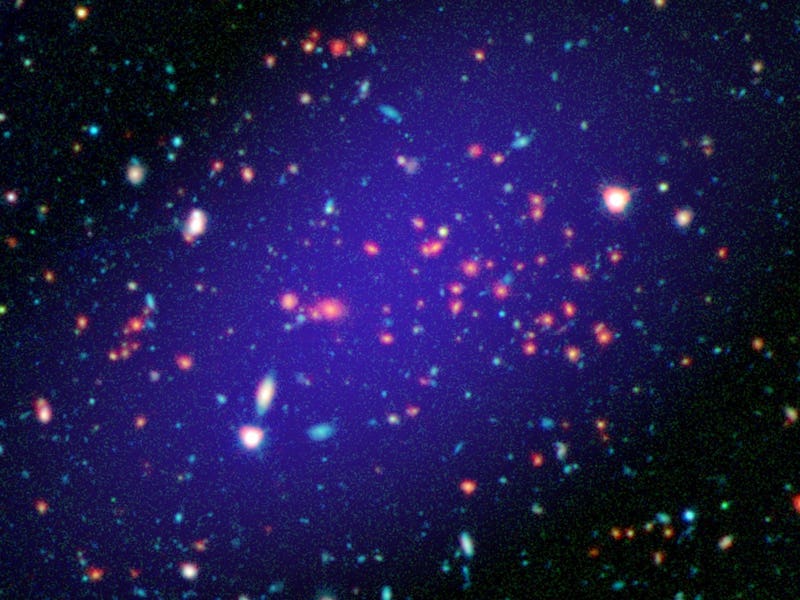Astronomers Discover the Biggest Galaxy Cluster Humans Have Ever Seen
H/T NASA's super-powered space telescopes

Space exploration sometimes gets damn close to being time travel. When we point our telescopes toward distant bodies and seeing the energy emanating from the stars, we’re actually looking at light that’s been loitering in the ill-defined unknown that makes up most of the universe. Case in point: a newly-discovered galaxy cluster called MOO J1142+1527, located 8.5 billion light-years from Earth. The light from such a massive structure has been traveling for 8.5 billion years, and has only just made it to our neck of the woods. It’s an incredible sight of such a massive celestial system (though who knows what it looks like these days…)
This new galaxy cluster is the biggest structure of its kind we’ve yet to find. It’s been alive and kicking since before Earth had even formed.
Scientists are getting better at finding these types of things, thanks to new kinds of technologies. In the case of MOO J1142+1527, we’re specifically talking about NASA’s Spitzer Space Telescope (SST) and the Wide-field Infrared Survey Explorer (WISE).
The SST, launched in 2003, is the fourth and final structure in NASA’s Great Observatories family that includes the famous Hubble Space Telescope. Most of SST’s instruments are actually out of commission due to an exhaustion in the liquid helium reserves needed to cool them. The two exceptions are the two shortest-wavelength modules that still operate as well as they did a decade go.
This is important because as light from far away galaxies finally becomes visible to us, it becomes stretched to longer wavelengths that veer on the infrared side of the spectrum. Spitzer can take images of these lights, but it needs to know where to look.
That’s where WISE comes in. Think of WISE as a long-view camera that can scan the entire night sky relatively quickly, and Spitzer as an ultra-precise microscope that hones in on a narrow target. Scientists at NASA’s Jet Propulsion Laboratory combed through the catalog of data acquired by the WISE telescope — which has snapped images of hundreds of millions of objects in outer space — to search for potential locations of the universe. They use Spitzer to look closely at 200 different targets, and before you know it, we’ve found a new clusterf* of galaxies.
Through other instruments based here on Earth, the team of scientists were able to determine that MOO J1142+1527 is about a quadrillion times more massive than the sun. It’s probably only one of a few clusters of this magnitude to have been born during the early universe.
Next up for the research team: digging through more than 1,7000 other galaxy cluster candidates with Spitzer. Chances are low they will find something bigger than this latest structure, but never say never.